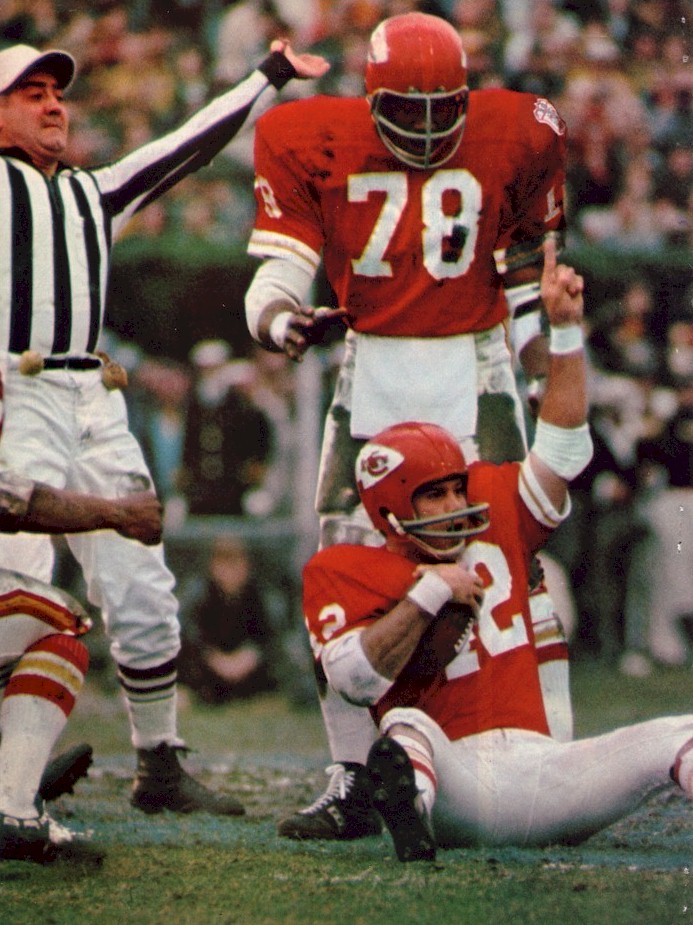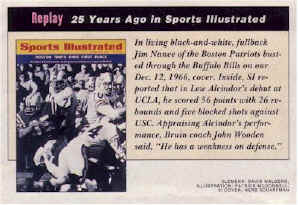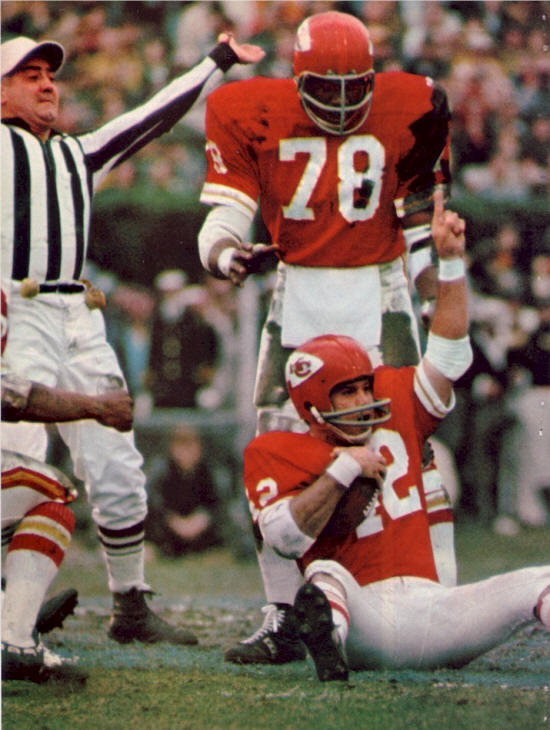|
|
|||||
|
|
|
|
|
||
| . | |||||
The American Football League, the NFL and the Media |
||||||||
In the 1960s, Tex Maule and the magazine he was associated with, Sports Illustrated, were exemplary of the way many sports reporters forgot what should be the first rule of their profession: "maintain impartiality". Maule was known to his contemporaries as "an NFL guy", and rather than report the Professional Football scene objectively, he resorted to ridiculing and belittling the efforts of the American Football League and its players. The reasons for this treatment are evident: before going to SI as its lead Professional Football columnist, Maule spent years working for the NFL's Rams under Pete Rozelle. He reflected what seems to have been a common fault of the profession, all tied to that lack of impartiality: writers sometimes associate so closely with the teams and leagues they cover, that they evidently feel that they are representatives of those leagues and teams. They feel loyalty and partisanship for "their" teams, and express dislike for opponents or competitors. (Some would characterize them as "homers".) Even the AFL's brightest stars and
greatest moments did not escape Maule's vitriol.
On September 30 1968,
Tex Maule wrote an SI article on Pro Football's best young
quarterbacks. Somehow, he forgot to mention
Joe Namath,
Daryle Lamonica,
John
Hadl, or
Bob Griese! He did praise those unforgettable NFL
icons, Gary Cuozzo, Jack Concannon, Kent Nix, Bill Munson, and Randy
Johnson. You remember them, don't you?
For this slanted reporting, Maule and Sports Illustrated, as representatives of the print media who refused to give the AFL its due, are installed as typical members of the "American Football League Hall of Infamy". "Dishonorable Mentions" include William N. Wallace of the New York Times and Jerry Green of the Detroit Free Press, and all the other "NFL apologists" whose awe of the established league crippled their ability to report with impartiality. |
||||||||
| Paul Brown | PFRA | CBS-TV |
89th US Congress |
"pro football" Hall of Fame |
Bud Adams | |||



